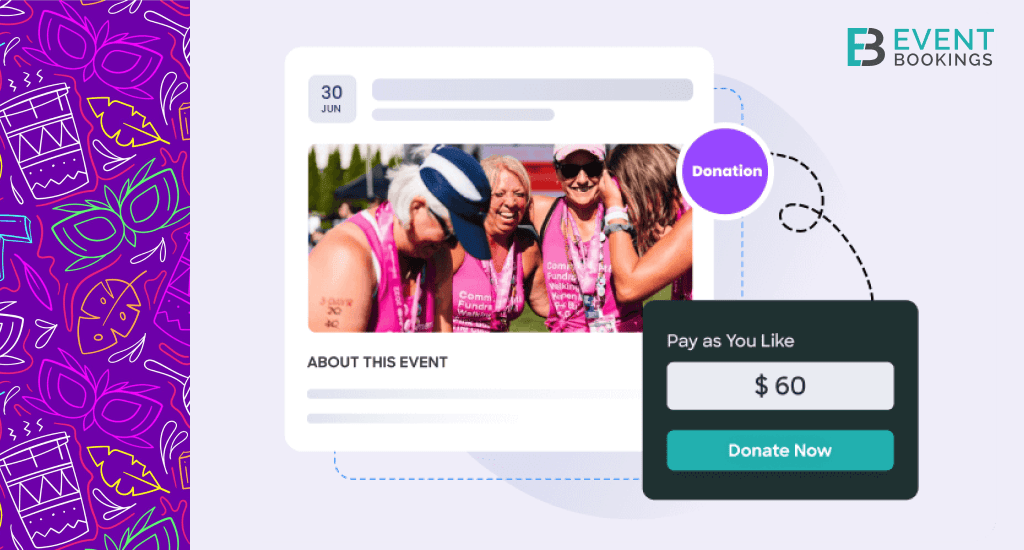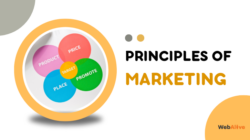
10 Proven Ways to Promote Charity Events | Marketing Tips & Tricks
At the core of non-profit operations lies a reliance on fundraising to deliver their missions and sustain their existence. Only a single non-profit organisation can reach their goals with adequate funding.
It is charity events that stand as a vital tool for non-profit organisations to generate funds for supporting their noble causes. Because it is the exposure generated by a charity event that helps organisations to find valuable partners, be it local business people or companies.
Moving beyond mere financial contributions, charity events even provide a unique opportunity for non-profits to connect with donors actively.
So, when done right, the return on investment can be tenfold.
What is a charity event?
Simply put, a charity event is an organised gathering or activity that aims to generate funds, foster awareness, or garner support for a charitable cause. Generally hosted by non-profit entities, charitable organisations, or even passionate individuals, these gatherings work towards making a positive impact on societal, humanitarian, or environmental issues.

Hosting fundraising events can take various forms, whether it’s in person or conducted virtually. Check out the 100+ ideas if you are looking for inspiration.
Is it necessary to be registered as a charity?
Though it differs from country to country, an organisation often get access to charity tax concessions and other benefits while being registered as a charity. Let’s take a look at the policies and facilities of some countries in the charity sector.
We will clearly understand what constitutes a charity in those countries and the benefits the countries provide to registering as a charity.
| Country name | What defines a charity? | Opportunities that the country provides |
|---|---|---|
| United Kingdom | An event that is clearly organised and primarily promoted to generate funds for the benefit of a charity or qualifying organisation. A body qualifies as a charity if it holds charitable status. For example, to achieve this, charities must be based in the UK, Isle of Man, an EU member state, Iceland, Liechtenstein, or Norway. Exist solely for charitable purposes and be registered, excepted, or exempted by relevant charity regulators. | The exemption for charitable fundraising is based upon Article 13A(1)(o) of the EC Sixth Directive on VAT. It is designed to allow charities and other qualifying bodies to exempt supplies of goods and services which they make as part of an event held to raise funds for their activities. However, to qualify for tax exemption as a fundraising event, eligible events have restrictions on the number of events, location, and kinds of events as well. Learn more here. |
| Australia | In Australia, the specific definition of fundraising may vary between states and territories as ACNC (Australian Charities and Not-for-profits Commission) does not regulate it. So, charities must comply with the fundraising laws in the state or territory where they raise funds. Check Fundraising Hub for information. Also, a charity must meet the ACNC Governance Standards. | As per a report of the Australian Institute of Health and Welfare, contributions made to registered charitable organisations may qualify for tax deductions if the Australian Taxation Office (ATO) has officially designated the entity as a Deductible Gift Recipient (DGR) (ATO 2023a). |
| United States | To qualify, an entity must be established under U.S. laws and operate exclusively for charitable, religious, scientific, literary, educational, or child and animal welfare purposes. Some organisations supporting amateur sports also qualify. To be eligible to receive a federal grant, non-profit organisations have to obtain a 501(c)(3) status from the Internal Revenue Service (IRS), excluding institutions of higher education. | A Non-profits meeting specific criteria can be tax-exempt under IRS Section 501(c)(3) as a charitable organisation. Learn more here. |
| Canada | To issue tax-exempt donation receipts as a charity, you need to apply for registered status. To be a registered charity, one should allocate resources for charitable activities within certain categories, such as alleviating poverty, advancing education, promoting religion and other community benefit. Also, in terms of holding any fundraising event for charity, only the charity can issue donation receipts. Using their registration number for receipts could risk their registration being revoked. Get more information on general guidelines here. | The Atlantic Canada Opportunities Agency (ACOA) generously supports numerous non-profit organisations across the Atlantic Canada region. |
| New Zealand | To attain charitable status, an organisation must offer a public benefit that closely aligns with what the courts have recognized as charitable. There are four charitable purpose categories outlined in the Charities Act 2005, including relieving poverty, advancing education, advancing religion and other community benefits. | There are several funding options available for New Zealand charities and not-for-profit organisations, as there are several groups of the Department of Internal Affairs that provide direct funding. Check out the funding options here. |
| Ireland | In Ireland, charitable organisations are governed by the Charities Act 2009. It defines four charitable purposes: alleviating poverty, advancing education, promoting religion, and benefiting the community, such as integration of the disadvantaged, health, environmental protection, animal welfare, and the arts. | The Charitable Donation Scheme enables tax relief on eligible contributions to approved organisations. |
If we view Australia’s charity sector, with around 60,000 registered charities, ranging from tiny, volunteer-run groups to large organisations, the number is rising daily. In the year 2020, which is considered a landmark year for the charity sector in Australia, the revenue sector rose to $176 billion, with an increase of $10 billion.
The last official data shows that Australia’s charitable sector amassed a staggering $190 billion in revenue recently.
10 ways to promote fundraising events
Now, if you have decided to hold a fundraising event, remember a lot goes into the planning and marketing. It can take many forms, including social media campaigns, email marketing, or traditional advertising.
As people like to have more control over their donations, it is through effective charity marketing you can inspire people to take action and support the organisation’s objectives. So here, the most important question is how to draw in more donors who will see you as being more trustworthy.
With that in mind on how to promote a charity event, here we’ve gathered 10 ideas to assist you in getting the word out about your event.
1. Use a well-planned fundraising calendar
Create a fundraising calendar to include all the key awareness days, months, or events aligned with the organisation’s core cause or mission. Eventually, having a marketing calendar will let you look ahead to plan your day, keeping the marketing priorities in front of you; all you have to do is follow it.
You can start by thoroughly researching the key awareness months or days relevant to your cause. Then, you can plan the activities and get them linked to your website. Suppose your cause revolves around the environment; you can centre your efforts around World Environment Day on the 5th of June or Environmental Awareness Month in September.
2. Use social media platforms

Leverage social media platforms to their fullest to generate a buzz surrounding your charity event. With 71% of non-profits worldwide agreeing that social media is effective for fundraising, it comes with no doubt that social media is one of the best ways to promote charity events.
You can make a Facebook event as everyone’s on Facebook nowadays. You can either make your event private or public, tailored to your organisation’s needs. Facebook events bring prime opportunity to expand reach with minimum effort as it requires just a push of a button to share the event with the entire list of connections.
Pin the event on the top of your dedicated page and post updates regularly. Try to send periodic notifications, including reminders to RSVP (Going, Not Going or Interested) until the day of. Fill in all the details about your event, from time and date to event photo to your cause to ticket purchasing links, to keep it interactive.
X (Previously Twitter)
When running a fundraising initiative, leverage the power of X for optimal outreach! Share direct links to your campaign page and craft tweets guiding individuals on how to contribute. Express gratitude to your donors on this platform as well. Don’t forget to incorporate persistent hashtags to reach new people and get your tweets seen by more people.
As LinkedIn is mostly popular among adults, it becomes idle for non-profits seeking to engage new donors. Unlock the potential to connect with investors across continents from the comfort of your seat using your LinkedIn fundraising page.
Make a complete company profile and include as much information about your upcoming charity events as possible. Post regular campaign updates and links to relevant content for your event. Use LinkedIn’s search function to target specific individuals, groups or businesses before reaching out.
You can even recruit volunteers or board members to donate their time or skills to a good cause.
You can use an Instagram business account and consider running Instagram ads to promote your upcoming event. Use the pinned post feature to showcase noteworthy news or impactful content aligning with your brand and mission or to unite supporters with a compelling call to action for donations to your cause.
You can even go for Instagram collaboration for greater engagement or post snapshots of your past event’s work on stories and save to story highlights.
3. Create compelling content
Creating compelling event-related content to raise funds for your organisation is hands down a great charity marketing strategy. Harness the potential of content marketing opportunities when promoting events online.
From blogs to social media updates to impact stories, add event-related content in each stage. Enhance audience participation with vibrant visuals! Showcase captivating photos, illustrations, and graphics. Suppose you can highlight memorable moments from past events by featuring images of participants or leverage the presence of renowned speakers, partners, or vendors by sharing their posts to generate anticipation for your upcoming event.
Establish an exclusive web page for your event on your charity’s website. Showcase comprehensive event particulars, facilitate seamless registration, and narrate a compelling story about the event’s significance. Infuse your content stream with a seamless mix of posts covering event updates and ticket sales.
Also, as per reports, individuals dedicate approximately 17 hours to consuming online videos per week and around 84 minutes daily. So, use video content in your marketing strategy as well.
4. Have a dedicated charity website
For non-profits, the goal is to achieve more and more conversions and having a website is the way to build awareness and enhance the scope of operations. Get a website for your cause and the operations involved.
It will tell the stories of the people you help and the people behind the operation while serving as an effective means to connect with a wider audience and showcase the remarkable initiatives you’re undertaking.
As outdated websites repel 75% of prospective donors, you must add engaging features for a cohesive site. With mobile devices accounting for 57% of the traffic to non-profit websites, ensure mobile-friendly design alongside hassle-free user experience and logical navigation and add features such as event calendar, chat feature, CTAs or social media links.
5. Local clubs and community

There are tons of ways local communities and clubs can assist you in your charity event marketing. You can collaborate with local influencers who can amplify your message by reaching a broader audience and willing to support your event. Or you can leverage local media, be it by reaching out to community reporters or journalists or sending press releases to local newspapers or TV stations.
Also, local clubs or communities tend to organise many community events that will allow you to advertise the event to draw attention quickly. Or you can try partnering with local businesses and ask if they would be willing to display flyers or promote the event somehow.
6. Run paid advertising
From Google to Facebook to TikTok, there are many choices out there where you can run paid advertising. It will help you expand your reach while boosting the chances to appear in the search results and retarget your existing visitors.
If you organise non-profit fundraising events such as galas and fun runs that you want the public to know, Google Ads is a powerful tool to reach those who could benefit and make the most of what you provide. Use Google Ad Grants as it empowers charitable organisations, providing them with monthly access to $13,000 in complimentary Google Ads spending.
For every campaign, make sure your landing page stands out as one of the most compelling sections on your website, guiding visitors to take the desired actions. Whether it’s a charity event ticketing page or a donation page, choose one that aligns with your organisation’s priorities.
You can pick any social media platform, be it Facebook, Twitter or LinkedIn. Suppose, using the Pay-Per-Click model, you can run LinkedIn ads by focusing on specific user groups by considering their occupation, industry, company affiliation, interests, and geographical and demographic characteristics.
Or, by pinpointing users by utilising various criteria, including their interests, the pages they favour, and even characteristics about their friends, you can go for Facebook ads.
7. Email marketing campaign

Despite the advent of multiple social media channels, email marketing is still crucial for non-profit event marketing. Not only is it free and low-cost to run, but emails ensure easy tracking and instant responses.
Reports say an investment of $1 in an email marketing campaign can yield an impressive return of $40.
Hence, email is the most lucrative channel for non-profits seeking to connect with potential donors. Some of the best practices you can follow when sending emails to your donors.
- Plan by choosing email marketing software and designing the email.
- Commit to sending regular communications.
- Keep it short and simple, and create FOMO.
- Focus on the subject line and use personal pronouns. Be human.
- Exercise caution regarding spam folders.
- Always use the same email address and answer promptly.
- Add CTAs like buy tickets; click here to subscribe or donate.
8. Engage media partners
To effectively promote your charity event through media partnerships, compile a media contact list and share pertinent updates for free publicity. Or expand your media reach across various platforms like radio, newspaper, TV or podcasts. Build relationships with reporters, editors or journalists.
Please provide them with additional information, interviews, or any other resources they may need to cover your event effectively. You can create a comprehensive media kit that includes high-quality images, logos, event details, key statistics about your charity, and any other relevant information, making it easy for media partners to access.
9. Leverage crowdfunding platforms

Crowdfunding is a way to fund your business and acquire financial support through loans, donations, or by offering rewards or shares in your venture in exchange for monetary contributions. Typically, this is accomplished via a crowdfunding platform.
Crowdfunding platforms vary, each accompanied by distinct terms and conditions. Among these conditions are potential fees, eligibility criteria, and the speed at which your charitable cause gains access to the funds generated.
So, pick the right one for you among the top crowdfunding sites.
ReadyFundGo
Create your crowdfunding campaign and get funded utilising social, PR and all available channels. Put in the effort, share your story, and aim for local media coverage to attract more supporters.
Pozible
Empower the creative journey with the premier toolkit designed to help one strategise, craft, and bring to life extraordinary crowdfunding campaigns across various categories and projects.
GoFundMe
Selecting GoFundMe stands out as the optimal choice for fulfilling your fundraising requirements. This versatile platform has assisted individuals in securing funds for various needs.
10. Post-Event Marketing
Your event is done! You got the chance to leverage the excitement generated by your event and had the opportunity to raise enough funds for your business cause.
Doesn’t that sound enjoyable? It does. But your marketing work is not over yet.
The post-event communication is one of the most important parts of your charity event marketing program. So, start planning about it early on.
Sent a gratitude email to the donors
Show your appreciation to your donors by sending a thank you email. This will help you to work on building and nurturing your relationship with the donors. Ensure that they understand the depth of your need and know how much you genuinely appreciate their presence.
Add post-event updates on social media and website
Create a post-event page to help your guests relive the entire experience or catch up on what they missed. Showcase every part of your event. Suppose you can create individual sections for your speakers, including their bio, photos or key takeaways from their presentation or compile a highlight reel or photo gallery showcasing the entertainment at the event, whether it’s stand-up comedians or other acts.
Sent press release to the media outlet
You can post a press release to tell the success story of your event, highlighting the achievements. For example, you can mention the number of prospects you could connect, the amount of funding you got, the size of audiences, etc.
Host your charity event with the right platform!
Once you have decided on the mediums you are going to promote your charity event, the next step is going to be to pick an all-in-one non-profit event ticketing software that will empower you to raise donations and minimise the complexities of event hosting and, most importantly allow you to implement the marketing tricks we have discussed above.
Choose EventBookings to host your coming charity event, that too, with full confidence. Whether to run fundraisers, collect donations, or host charity events, the platform provides you with everything you need. Whether it’s about utilising social media platforms to their maximum potential to create excitement around your charity event, promoting compelling content, or running email and post-event marketing, EventBookings has you covered.
EventBookings will empower you with comprehensive control over the entire event while adding substantial value for your attendees. This added value will, in turn, lead to increased donations and fundraising success.

You can create various ticket types, from coupons to VIPs to group ticketing, and persuade more donors to sign up. Or take advantage of the advanced email marketing system and easy-to-use social sharing buttons to collect more donations.
The event page serves as the initial point of contact for prospective attendees visiting your website. It is the driving force that inspires the visitors to attend your event. Hence, a well-designed event page can play a massive role in collecting donations for your cause.
Here, EventBookings allows you to craft personalised non-profit event pages that not only engage and educate your audience but also entice them to purchase tickets online for a seamless checkout experience.
EventBookings also lets your organisation collaborate from any part of the world while allowing you to manage check-in right from your phone by scanning tickets. With EventBooking, you not only have the ability to raise funds effectively but can also set event restrictions to align with your specific needs.
You can harness the power of merchandise sales to boost your fundraising efforts further. Moreover, the platform equips you with in-house marketing tools that enable you to reach a wider audience, ensuring your event’s success and impact extend far and wide.
Setting up charity events on EventBookings is effortless.
- Create your event and select the ticket types.
- Customise your event page with event info, visuals, videos, and more.
- Create promotions to persuade people to sign up and gather more donations.
- Keep track of your promotional measures with real-time reporting.
- Use the mobile app to scan and organise tickets right at the gate and receive donations on your terms.
Final words
So, if you want to host a charity event, it’s high time to start promoting your event and pick the right platform.
It requires careful planning and execution. As you’ve already got the needed ideas to start off to get as many people as possible to hear about your event, go for the one you are sure to suit your event cause.
In the end, make sure that your event generates significant funds and leaves a lasting impression.
Happy fundraising!
You read a lot. We like that
Want to take your online business to the next level? Get the tips and insights that matter.

